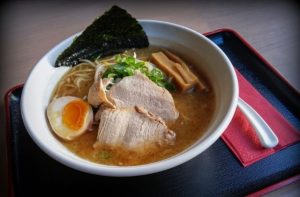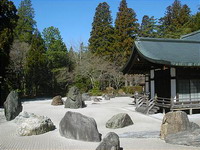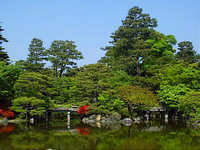TOURIST NOTES. ALL ABOUT RAMEN (part 2)
 But, of course, not a single ramen plate would be complete without a filling! Although there are no established rules for the filling and its choice lies entirely at the discretion of the chefs and visitors, in addition, there are regional trends. However, there are certain basic foods that can usually be found in ramen throughout the country, including tasu (chunks of pork), manma (seasoned bamboo shoots), spring onions, narutomaki (curly fish cakes), pickled boiled eggs and seaweed nori.
But, of course, not a single ramen plate would be complete without a filling! Although there are no established rules for the filling and its choice lies entirely at the discretion of the chefs and visitors, in addition, there are regional trends. However, there are certain basic foods that can usually be found in ramen throughout the country, including tasu (chunks of pork), manma (seasoned bamboo shoots), spring onions, narutomaki (curly fish cakes), pickled boiled eggs and seaweed nori.
TYPES OF RAMEN
Types of ramen vary from island to island, from prefecture to prefecture, and even from season to season (there are at least 30 different types of regional ramen). The aforementioned Ramen Museum classifies Japanese ramen using three different scales – based on soup, seasoning and “style.”
Let’s start with the soup. The classification of the soup depends on the basis on which it is cooked. There are 4 categories: tonkotsu (pork), chicken, fish (dashi) and vegetables.
Now about seasoning. Ramen broths can contain from 5 to 40 (!) Ingredients. And it might seem that there are as many types of ramen broth as there are ramen in Japan.
There are three main types of seasoning: shoyu (soy sauce), sio (salt) and miso.
Latest style classification. There are many different styles of ramen, and it is not surprising that most people are not familiar with some of them. For example, there are tsukamen (noodles to be dipped in broth), mazeman (noodles and toppings without any broth), hiyashi tuka (a light cold ramen dish often eaten in summer) and many others.
Some of the most common styles are:
sapporo ramen with sweet corn, bean sprouts and local seafood in miso broth;
Kitakata ramen with thick noodles in a broth with pork and nibosi (dried sardine);
thin noodle hakata ramen in tonkotsu broth with many “exotic” fillings.
The three ramen classifications are not mutually exclusive, which means that the search for subtle miso tsukamen (or any other wild combination) can succeed.
ETIQUETTE
Now that we have a deeper understanding of ramen as a dish, let’s see how to order and eat ramen while on holiday in Japan. People familiar with Japanese culture know that etiquette is ubiquitous and of paramount importance – this is also true for eating ramen.
One of the features that is common in many ramen houses – from those located in the back alleys to brightly lit chain stores – is a vending machine where you can buy ramen. In many popular places in Tokyo there will be photographs of dishes whose name is signed in English, because the Japanese are used to foreigners who come to rest in Japan. But if you are in a small or local restaurant, you are unlikely to see photos or English. But store recommendations or specialties are often clearly marked with a sign that reads “osusume” (お 勧 め · お す す め · オ ス ス メ). Kora wa nan des ka is another useful phrase (literally means “What is this?”), Because even a monosyllabic answer, such as “tonkotsu”, will let you know if you are on the right track.
Keep in mind that despite its low price (usually between 700 and 1,100 yen), ramen can be a very satisfying food! There is no need to be too zealous when ordering. Standard sizes often seem large!
After a successful selection in the vending machine, you will receive a ticket. If there is no queue, you can take a seat at the counter, hand over your ticket to an employee and sit with bated breath while the food is being prepared. In most cases, the dish is cooked somewhere at the counter, so you can see the chef in action. When your ramen is ready, you will be served two cutlery: a spoon for the broth and chopsticks for noodles and toppings. The rack often has additional seasonings that can be added to ramen.
WHERE TO SAY RAMEN?
Kageyama
In Tokyo Takadanobab there is no shortage of ramen, but the favorite of many tourists who are not the first time to rest in Japan is Kageyama. They serve chicken ramen with lemon and rice. Although the broth looks like chicken soup, lighter toppings and lemon make the dish savory. It is perfect for summer! Having bought a guided tour to Japan, be sure to visit this place.
Address: 1 Chome-4-18 Takadanobaba, Shinjuku, Tokyo 169-0075;
Kikanbo
Kikanbo is a network of miso-ramen stores throughout Tokyo. Their most popular ramen is served with thick slices of pork, and for those who like it sharper, you can order more chili and sichuan pepper.
Tomita
Tomita Ramen in Matsudo (near Tokyo) is famous throughout the country, and Tonkotsu Tsukeman (or Tsukesoba) is considered the best. Thus, the waiting time can be at least an hour, and sometimes significantly longer. But as soon as you try this rich rich taste, you will realize that it was worth the wait!
Address: 1339 Takahashi Building, Matsudo, Chiba Prefecture 271-0092.



